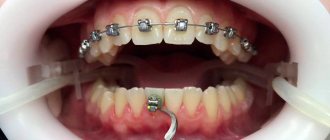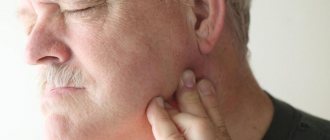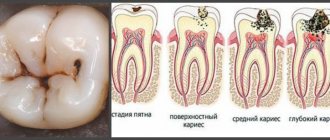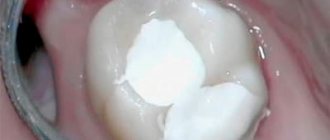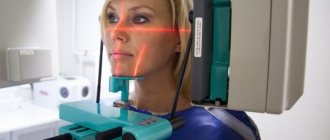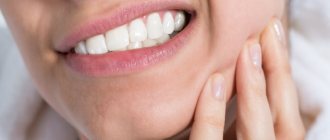Straight teeth are a sign of status and success. Therefore, many people strive to change their malocclusion at any age. The most common method is to install braces, but it is not suitable for everyone. And then the question arises - is it possible to correct the bite without braces?
In this article
- What is malocclusion?
- Why correct an overbite?
- How do braces work?
- In what cases is an alternative to the braces system needed?
- How to correct teeth bite without braces?
- When are orthodontic plates used?
- How can you correct your bite with trainers?
- Aligners for correcting bite
- When can veneers be used instead of braces?
- How to correct deep bite of permanent teeth without metal braces?
- Conclusion
What is malocclusion?
Malocclusion, or pathological occlusion, is the abnormal closure of the teeth of the upper and lower jaw, caused by the incorrect location of the teeth in the oral cavity. In a person with a normal bite, the teeth are in close contact with each other when they close, the chewing teeth evenly close with similar teeth of the opposite jaw, and the upper incisors overlap the lower ones by a third.
With malocclusion, the position of the teeth differs from the physiological norm. Depending on the type of closure, several types of abnormal bite are distinguished:
- Mesial - it is characterized by a forward chin and overlapping of the upper teeth by the lower teeth.
- A deep bite is characterized by the fact that the teeth of the upper jaw strongly cover the teeth of the lower jaw. This closure anomaly is fraught with problems with chewing and diction.
- The distal bite is characterized by a small chin and a strong protrusion of the upper jaw. Usually it is caused either by underdevelopment of the lower jaw, or, on the contrary, by excessively rapid development of the upper jaw.
- A crossbite is characterized by a horizontal displacement of the jaw to the side; in different areas, the teeth may overlap each other.
- An open bite is easily recognized by the large gap between the upper and lower teeth. In the area of the front teeth, complete closure of the dentition does not occur.
Any malocclusion requires mandatory correction.
Symptoms
To understand that your jaw needs correction, you need to understand what a proper bite looks like. A healthy bite is a position of the teeth in which the upper jaw slightly covers the lower jaw.
At the same time, chewing movements are performed easily, without any difficulties. If any disturbances occur during the growth and eruption of teeth or during the formation of the jaw, the following signs may appear:
- underdevelopment of the lower jaw - the upper row of teeth is strongly pushed forward;
- malocclusion - protruding lower jaw;
- the formation of an additional row of teeth or the loss of several units.
Unfortunately, such symptoms cannot be noticed immediately. As a result, the child’s jaw is formed incorrectly, facial features change, the smile takes on unaesthetic shapes, and there is also a risk of developing oral diseases, in particular, periodontal disease.
Only a qualified dentist can determine improper jaw formation, however, there are several typical signs that are worth paying attention to:
- pain when chewing and opening the mouth;
- jaw clicking;
- protruding upper lip.
- asymmetrically located rows of teeth in a closed state.
- overdeveloped lower jaw, strongly protruding forward.
- crooked teeth.
If you detect at least one sign, you should contact an experienced specialist. Based on the definition of a healthy bite, we can conclude that there are several types of improper jaw formation.
Modern methods of correcting a small lower jaw in children and adults.
Let's find out here when lengthening of the dentition is an anomaly that requires immediate correction.
At this address https://orto-info.ru/zubocheliustnye-anomalii/chelyustey/rashirnie.html we will talk about methods for expanding the dentition in adults.
Why correct an overbite?
While some people, together with an orthodontist, are selecting the best way to correct their bite, others are wondering - why is this necessary?
There is a myth that malocclusion and crooked teeth are purely aesthetic issues. And if a person is not bothered by his appearance, there is no point in fixing his teeth. Orthodontists have a different opinion on this matter.
Even those malocclusions that do not bother the patient lead to certain health problems:
- An incorrect bite may be accompanied by abrasion of tooth enamel and exposure of the tooth root as a result of the load being distributed incorrectly when chewing.
- When the functioning of the temporomandibular joint is impaired, a person is often bothered by headaches.
- With severe malocclusion, speech and diction are impaired.
- Incorrect position of teeth interferes with normal hygiene. Even a good toothbrush, floss, or irrigator cannot thoroughly clean hard-to-reach areas, which leads to the development of caries and other dental diseases.
- In patients with malocclusions, it is not uncommon to have diseases of the digestive tract, since the position of the teeth interferes with chewing function.
- The abnormal shape and position of the jaw can affect changes in the skeletal system as a whole and contribute to diseases of the respiratory and musculoskeletal systems of the body.
The connection between malocclusion and health is obvious, so it is important to think about how to correct your teeth. This issue is best addressed in childhood and adolescence, although modern dental technologies help correct malocclusion with braces or other methods in adulthood.
Price
The cost of correcting a bite in adults depends on various factors:
- Clinical picture, complexity of pathology.
- The need for additional surgical treatment, correction of defects of the mandibular joint.
- Type of orthodontic appliances necessary to correct the bite and straighten the dentition.
- Cost of retainers for the post-braces stage.
The cheapest way to correct a bite is with metal braces. In Moscow, the cost of such treatment starts from 110 thousand rubles. The price for ceramic braces is from 160 thousand rubles. The highest prices are for correcting malocclusion with lingual braces, but in some cases they are the only way.
Do you have problems with your bite? Do you think that it is no longer possible to correct it as an adult? Come for a consultation with an orthodontist at the Zuub.rf clinic. The doctor will conduct an initial examination and diagnosis, and tell you about possible ways to correct the bite. Remember, it is better to treat abnormal bite in childhood, but pathologies can also be successfully treated in adulthood.
How do braces work?
The brace system is considered one of the most effective ways to correct malocclusion and is therefore most widely used in orthodontics.
The bracket system is a structure consisting of a metal arch with shape memory and small plates attached to the surface of the teeth. This complex orthodontic device is capable of moving in the desired direction not only the dental crown (the visible part of the tooth), but also the roots, that is, completely shifting the position of the tooth in the jaw.
The operating principle of the bracket system is as follows. A bracket is attached to each tooth at a certain point, which is calculated in advance by the doctor, using orthodontic glue. Titanium or nickel wire is fixed into the grooves on the braces. These metals have shape memory, and when the arch is attached to crooked teeth, it tends to return to its correct shape. Thus, it puts pressure on the teeth and moves them in the desired direction.
Teeth displacement under the influence of braces is possible due to the physiological characteristics of our body. The teeth are attached to the socket thanks to the ligamentous apparatus - the periodontium, which is penetrated by blood vessels and nerves. When the arc presses on the tooth, a pressure zone is formed in the periodontium, where bone tissue is gradually reabsorbed - it is in this direction that the tooth moves. In the stretch zone (where it moves), bone tissue, on the contrary, is formed.
The process of formation and resorption of bone tissue occurs slowly, so orthodontic treatment usually takes several months or even years.
Causes
Malocclusion can be caused by various reasons. This disease in most cases originates from childhood, and a common cause of the formation of a crooked jaw is a hereditary factor.
Children inherit the shape of their teeth from their parents, and pathologies can have very serious consequences.
There are several main reasons that result in the formation of malocclusion:
- Features of pregnancy. At a certain stage of intrauterine development, bone tissue is formed in the fetus - it is during this period that proper nutrition of the mother, enriched with calcium and other microelements, is important.
- Artificial feeding. The baby must develop the jaw from birth - this is why it is so important to prolong the baby’s natural nutrition as much as possible.
Sucking the breast is a necessary workout for muscles and joints. Without these exercises, jaw formation may go the wrong way. - Missing some teeth . For facial injuries associated with jaw injuries, you should consult a dentist as soon as possible, as teeth tend to take up as much free space as possible.
- “Bad” childhood habits. Even harmless thumb sucking or prolonged use of a pacifier can cause serious consequences (curvature of the jaw and teeth, as well as improper bite formation).
- Chronic runny nose. Mouth breathing has a negative effect on the muscles of the tongue when it stops putting pressure on the teeth from the inside and tends downward. As a result, improper formation of the upper jaw occurs.
- Mechanical injuries . Falls, blows and other actions sometimes lead to curvature of the lower jaw.
Based on all of the above, we can conclude that the sooner parents pay attention to the formation of the child’s jaw, the easier it will be to correct the defects.
For information about the causes of jaw displacement and methods for eliminating the problem, watch the video.
In what cases is an alternative to the braces system needed?
Dentists recognize the braces system as the most effective and versatile way to move teeth. But its use is not always possible or justified. And then the question arises, how to correct the bite without the help of braces.
Below we will consider in which cases an alternative orthodontic treatment option may be needed.
- Early childhood.
The optimal age for installing braces is considered to be adolescence from 13-15 years, less often - from 11-12. Before this age, braces are usually not installed. Because children have not yet had a change from a primary bite to a permanent one and have not yet completed the formation of the jaw. In childhood, the bite can only be changed without the help of braces. The optimal method is selected by the doctor.
- Medical contraindications to wearing braces.
These include connective or bone tissue diseases, systemic diseases of the blood, endocrine or immune system, mental disorders, severe bruxism (teeth grinding), and allergies to braces material.
- Insufficient oral hygiene.
Relative contraindications include poor dental and oral hygiene. Caring for braces requires special brushes, an irrigator, and a little more effort than regular cleaning. If a person cannot maintain the required level of hygiene, it is better to opt for an alternative orthodontic treatment option.
- Refusal to wear braces.
Sometimes the patient has no obvious contraindications to wearing braces. But he is looking for an alternative because he believes that braces look unaesthetic.
- Complex malocclusion.
Some defects cannot be corrected with braces; other orthodontic structures or even surgical intervention are needed.
Bone grafting for jaw implantation
The more implants are installed, the greater the likelihood that the existing bone tissue will not be enough to install implants and it will be necessary to build it up. Bone deficiency can be in thickness (very thin bone) or in height (close to the maxillary sinuses in the upper jaw, nerve in the lower jaw).
If there is a slight lack of bone tissue in thickness, one-step bone grafting with the installation of implants is possible. It is also possible to perform a sinus lift (a type of bone tissue augmentation when the distance to the maxillary sinus is insufficient) with the simultaneous installation of implants.
If there is a large deficiency of bone tissue, operations are first performed to build it up (open sinus lift, harvesting and replanting of a bone block), and after 3-6 months, implantation is performed. In this case, the total duration of treatment can be from one to one and a half years.
How to correct teeth bite without braces?
Thanks to modern dental capabilities, a variety of methods and technologies, today it is possible to correct dental occlusion without braces. The following alternatives exist:
- orthodontic plates;
- trainers;
- aligners;
- veneers.
There are also methods of myotherapy and surgical correction of bite. Each method has its own indications and contraindications. Therefore, it is necessary to decide the question of how to correct a bite without braces, which correction method will be optimal, together with a doctor.
When are orthodontic plates used?
Braces are not used on baby teeth, but parents and especially a dentist can notice malocclusion in a child at the age of 6-7 years. One of the most common methods of orthodontic treatment during this period is plates. They are a removable structure that consists of metal fasteners and a plastic base. The plate is fixed on the teeth, pressing the plastic part against the upper palate and prevents their further curvature. There are plates equipped with a special screw, which expands the area of the plastic element. These models are used to enlarge the jaw. The period of wearing the plate can be from 3 to 15 months, depending on the purpose of its use.
The great advantage of the plate is that it is a removable structure that can be removed, cleaned and does not impede oral care.
Sometimes, instead of braces, you can use trainers, structures made of flexible silicone material. Most often, trainers are prescribed to adolescents to stimulate or, conversely, slow down the growth of the jaw, correct its shape, and the width of the palate. For adults, the orthodontist may prescribe trainers to reduce pressure on the bite of the maxillofacial muscles and maintain the effect achieved by other treatment methods. The functionality of trainers goes beyond bite correction. They are used to wean from bad habits (thumb sucking), to form correct breathing through the nose and for other purposes. They can be used when, for some reason, orthodontic treatment with braces or plates is contraindicated for the patient.
Prevention
As already mentioned, the main reason for the incorrect formation of a crooked jaw is heredity. Therefore, parents need to carefully monitor their child’s oral cavity. Useful tips:
- Natural feeding.
- Timely treatment of a runny nose.
- Proper nutrition for pregnant and nursing mothers.
- Visiting the dentist.
In addition, it is important to rid the baby of his “bad” habits, which can also lead to deformation of the maxillofacial joint.
How can you correct your bite with trainers?
Another alternative to braces is trainers. They are elastic (usually silicone) splints that help guide the growth of permanent teeth in the desired direction during eruption and consolidate the results of treatment with other orthodontic devices. Trainers eliminate bad habits, such as thumb sucking, which can also interfere with the formation of a normal bite.
Trainers are suitable for use in children from the age of four. Unlike braces, this design cannot correct complex malocclusion, but it affects the jaw and teeth even before they erupt. Dentists note: with early use, the effectiveness of treatment with trainers reaches 90%, and often the installation of braces in adolescence is no longer required.
Trainers change during the treatment process. At the initial stage, the doctor places a soft and flexible structure to make it easier for the patient to adapt to wearing it. At the last stage of treatment, a harder trainer is installed, which intensively affects the teeth. The last trainer is retention. It is placed after the end of the main treatment period in order to record the result. The duration of wearing the structure is determined by the dentist, but on average it ranges from 6 months to several years.
How much does implantation cost if there are no teeth?
Despite the apparent high cost of implantation in the absence of teeth, it may turn out to be more profitable than restoring already hopeless teeth. In addition, the service life of implants is unlimited. Treatment is carried out in stages and is also paid for.
So, the price of jaw implantation in the absence of teeth depends on the type of structure (metal-plastic, metal-ceramic) and the implant system.
The cost of jaw implantation on 6 ROOT implants (Switzerland) with a metal-plastic prosthesis starts from 150,000 rubles. It is possible to replace the metal-plastic structure with a metal-ceramic one at a cost of 90,000 rubles.
The cost of jaw implantation on 4 Snucone implants (South Korea) with a metal-plastic prosthesis starts from 160,000 rubles.
Aligners for correcting bite
Aligners, known to many as orthodontic aligners, can help correct uneven teeth without braces at any age. In other countries, they have been actively used as an alternative to braces for many years; in Russia they are only gaining popularity. Structurally, the aligner is a transparent lining on the dentition. It is invisible on the teeth, like braces, but at the same time it exerts the necessary pressure, moving the teeth in the desired direction.
Aligners are made using 3D technology, so they fit tightly to the teeth, create the correct load taking into account the individual characteristics of the patient and, accordingly, allow you to predict the result of treatment with high accuracy.
Aligners have other advantages:
- they are gentle on teeth without damaging the enamel;
- easy to install;
- are removed before eating and brushing teeth, which simplifies hygiene and does not require a special diet.
Despite their advantages, aligners cannot correct all bite defects, so an orthodontist consultation is necessary.
When can veneers be used instead of braces?
Another solution to fix teeth without braces is veneers. These are the thinnest plates made of composite or ceramic material, made according to individual impressions for each patient. They are applied to the front surface and cutting edge of the tooth. Thus, veneers mask irregularities, malocclusion, and also protect the “native” tooth from negative external influences.
Veneers, unlike braces, do not move the teeth in the jaw. Their main function is aesthetic. They allow you to achieve a beautiful smile without long-term bite correction. This option is suitable for adults for whom an abnormal bite does not cause much concern, but who want to have a beautiful smile.
How to correct deep bite of permanent teeth without metal braces?
Deep bite is one of the most common anomalies in the practice of an orthodontist, which occurs in children and adults. For its treatment, in addition to braces, orthodontic aligners and special plates can be used.
For children under 12 years of age, deep bite is treated mainly with the help of a plate and myogymnastics. For teenagers, the most effective method is to wear lingual braces. If a deep permanent bite needs to be corrected without braces, the doctor may prescribe retainers or other devices. But you need to be prepared for the fact that without braces the treatment will be longer.
In adults, a deep bite is almost impossible to correct without the help of braces; neither plates nor retainers give the desired result. The only alternative is veneers. But it is important to understand that they do not move teeth, but only hide their imperfections. Another option is prosthetics on implants, but this method has many contraindications and high cost.
How to avoid bone grafting?
There are proven methods that allow you to reliably restore teeth on one or both jaws without additional operations to build bone tissue.
First of all, it’s worth talking about the positions in which implants are installed.
Humans have a total of 32 teeth, 16 teeth on each jaw. The 2 outer teeth are wisdom teeth; they do not bear a functional load, therefore they are not restored with prosthetics. Of the remaining 14 teeth (7 on each side), the most problematic in terms of restoration are the sixth and seventh teeth (counting from the center). They are located close to the maxillary sinus in the upper jaw and to the nerve in the lower jaw. It is precisely to restore the sixth and seventh teeth that lengthy osteoplastic operations are necessary.
According to the recommendations of the international association of implantologists ITI - International Team for Implantology, in the case of complete absence of teeth, it is necessary to restore the dentition up to the sixth tooth inclusive (12 teeth on each jaw). This method completely restores both the function of the jaw and the aesthetics of the smile. At the same time, additional risks associated with the close location of anatomically important formations (maxillary sinuses and nerve) are avoided.
In this case, the implants are installed in the anterior part of the jaw, and the outer ones in the area of the fifth teeth (the so-called Frankfurt University protocol). Subsequently, a one-piece fixed prosthesis is installed on them. Combining all implants into a single structure compensates for lateral chewing loads and ensures full functioning of the entire jaw with only 6 implants in the lower jaw and 6-8 in the upper jaw.
Another problem is a deficiency of bone tissue thickness (thin bone). To avoid bone grafting in this case, it is possible to use thin implants. However, not all systems guarantee that their thin implants can withstand the load of full jaw prosthetics. Such guarantees are provided by the German Ankylos implants; the Straumann company has also developed a special alloy of titanium and zirconium, which allows thin implants to function without building up bone tissue, it is called Straumann Roxolid.
And lastly, if there is a deficiency of bone tissue both in height and width, a possible solution is to install short and thin implants, but in larger quantities. Instead of 6 standard ones - 8 short ones. The total length of the implants in this case will be equal.

